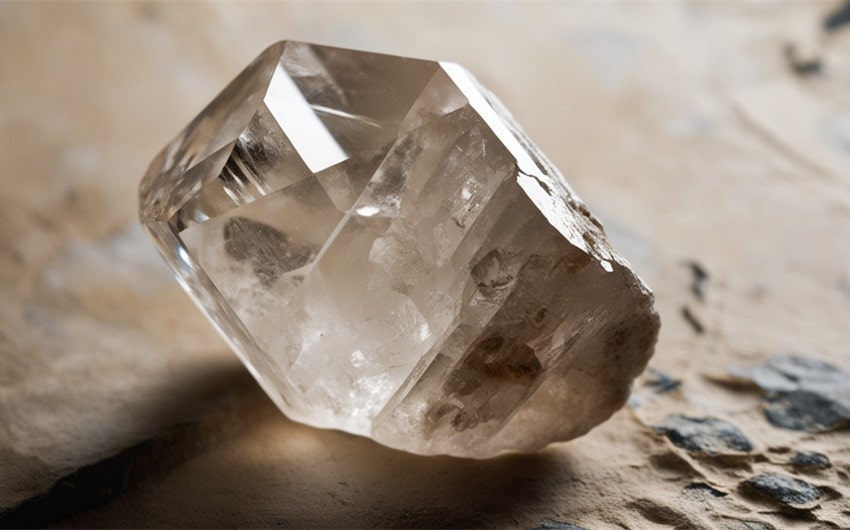Are Crystals Rocks: Unveiling the Science Behind
Many people wonder, “Are crystals rocks?” Crystals and rocks may appear similar, but they have unique differences rooted in their formation and structure. Crystals often captivate us with their distinct, geometric shapes, while rocks are admired as natural composites of minerals that tell Earth’s geological story.
Understanding the relationship between rocks and crystals provides insights into how they coexist and interact in nature. In this article, we’ll explore how crystals form within rocks, the processes behind their formation, and examples of stunning crystals found inside various types of rocks.
The Relationship Between Rocks and Crystals

Rocks and crystals share a complex and fascinating relationship in geology. While crystals are not themselves classified as rocks, they are often found within rocks, forming as part of their structure. Rocks are aggregates of minerals, and many of these minerals can crystallize under certain conditions, creating the beautiful, geometric formations we recognize as crystals. Below, we explore how crystals form within rocks, the processes that lead to this formation, and some notable examples.
Crystals as Part of Rocks
Minerals in Rocks: Rocks are composed of one or more minerals, and many minerals have the potential to crystallize. When these minerals cool slowly or have ample space to grow, they can develop into visible crystal structures within the rock.
Types of Rocks with Crystals: Certain types of rocks, especially igneous and some metamorphic rocks, are more likely to contain visible crystals due to the conditions under which they form. For instance, granite, an igneous rock, is known for its interlocking crystals of quartz, feldspar, and mica. In metamorphic rocks, slow heating and pressure can allow crystals to grow in distinct patterns.
Embedded Crystals: Crystals embedded in rocks often form during the cooling of magma or lava, where the minerals have time to crystallize within the rock. For example, in granite, you can often see quartz, mica, and feldspar crystals interlocked to form the rock’s visible grainy texture.
Formation Process
Cooling Rates and Crystal Formation: The formation of crystals within rocks largely depends on the cooling rate of molten materials. If magma or lava cools slowly, as in deep within Earth’s crust, minerals have enough time to arrange into crystalline structures, resulting in visible crystals within igneous rocks. When cooling occurs quickly, as in volcanic eruptions, crystals have less time to form, leading to smaller or even microscopic crystal structures.
Pressure and Temperature Conditions: Crystals can also form within rocks during metamorphism, where intense pressure and heat rearrange minerals within existing rocks, allowing crystals to grow. For example, in metamorphic rocks like schist, you might see garnet or staurolite crystals embedded due to high-pressure conditions deep within the Earth’s crust.
Evaporation and Precipitation: In sedimentary rocks, crystals may form through a different process, such as evaporation or precipitation from mineral-rich water. When water evaporates, it leaves behind minerals that can crystallize over time. This process can result in crystal formations in rocks like limestone, where calcite crystals develop.
Examples of Crystals in Rocks

- Quartz Crystals in Granite: Granite is a well-known igneous rock often found with visible quartz crystals. These quartz crystals form as the molten rock cools slowly beneath the Earth’s surface, allowing the quartz minerals to crystallize in large, distinct patterns.
- Amethyst and Geodes: Geodes are rocks with hollow cavities lined with crystals, often quartz, such as amethyst. These crystals form when mineral-rich water enters the cavity and deposits minerals over time, resulting in striking crystal formations.
- Garnet Crystals in Schist: Schist, a type of metamorphic rock, often contains garnet crystals that form under intense pressure and heat during metamorphism. These garnet crystals are prized for their durability and vibrant color, frequently used in jewelry.
- Calcite Crystals in Limestone: Limestone, a sedimentary rock, can contain calcite crystals formed from the precipitation of calcium carbonate. These crystals develop as mineral-rich water passes through the rock, leaving behind calcite deposits that eventually crystallize.

